Click here for English
Atât Cupidon, zeul iubirii la Romani cât și Eros, zeul iubirii la Greci sunt embleme arhicunoscute. Îl știm cu toții pe Cupidon, copilul dolofănel gata să țintească cu sagetiile sale inimile oamenilor în nevoie de iubire. Totuși reprezentările clasice atât în tablouri, cât și în statui nu-l prezintă în acest fel, ci ca pe un tânăr, uneori adult în toată firea. De asemenea Eros, colegul său Grec, este prezentat ca un bărbat bine. Toate aceste interpretări diferite au fost create în timp și personalizate de fiecare cultură care le-a folosit. Acesta este un proces normal. Culturile evoluează, oamenii învață, se schimbă, cresc, copilăresc… În esență: trăiesc!
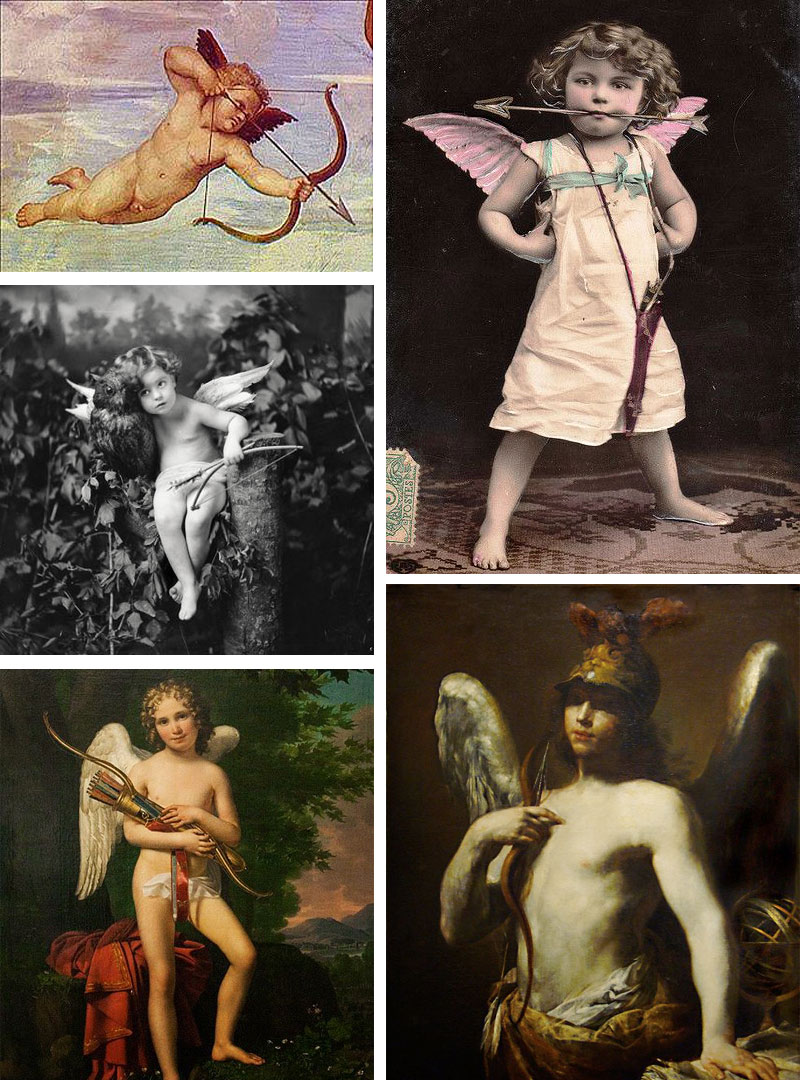
De aceea vă invit astăzi să ne spuneți despre Dragobete. Cine este Dragobete pentru voi? Ce reprezintă? E un bărbat bine, frânge inimi, precum ni l-a prezentat Harap Alb Continuă? Este un simbol precum în grafica lui Bre? E un caracter de poveste precum ne-a arătat echipa de la Avem și Noi Super Eroi? Sau e un vis, o emoție, un o sclipire în ochi, un zâmbet șugubăt?
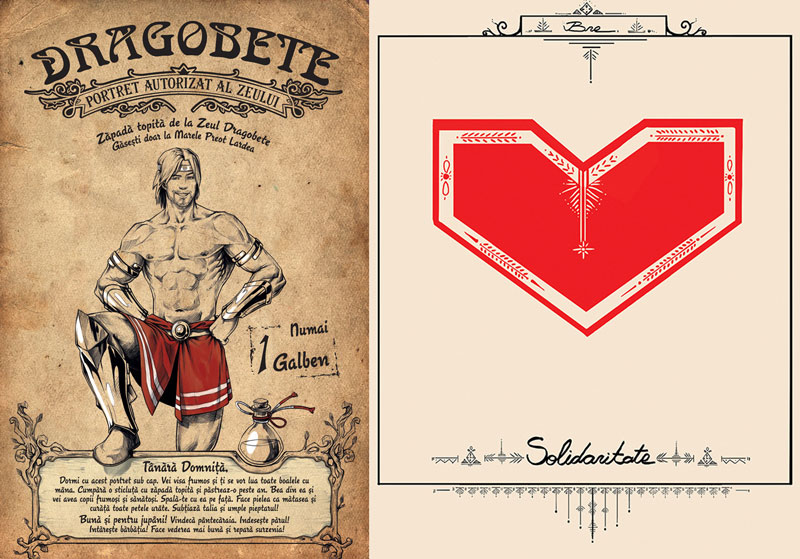
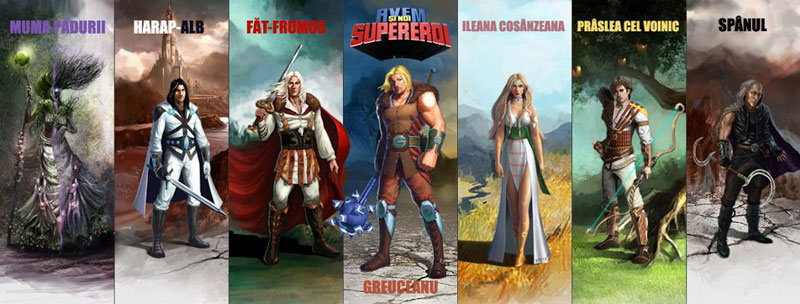
Ion Ghinoiu, ne spune în „Obiceiuri populare de peste an – Dictionar” (1997), că numele de Dragobete se poate asocia cu un personaj din mitologia populară romanească: „zeu tanăr al Panteonului autohton cu dată fixă de celebrare în același sat, dar variabilă de la zonă la zonă (…), patron al dragostei și bunei dispoziții pe plaiurile romanesti”, fiind identificat cu „Cupidon, zeul dragostei în mitologia romană, și cu Eros, zeul iubirii în mitologia greacă”.
Vă invit să citiți despre Dragobete, dar nu în ideea de a-i găsi cuvântul istoric ci în ideea de a îl simții. De a găsi ce reprezintă pentru voi, în inima voastră, esența iubirii, esența lui Dragobete prin inima unei Românce/unui Român. Evident nu spun să ignorați istoria, ci spun doar să o folosiți ca inspirație și nu ca literă de lege.
Și astfel vă provoc să vă jucați în următoarele două săptămâni citind și creând despre și pentru Dragobete.
1. Cum arată Dragobete?
Desenați, pictați, faceți colaje, folosiți nasturi, frunze, pene, pictați cu degetele, scrieți, dansați, fotografiați, filmați dacă simțiți, desenați în zăpadă, pe oglinda aburindă din baie, cu ruj pe piele, în blana cățelului adormit, prin privirea copilului care v-a demonstrat că 1+1=3…Cele mai interesante reprezentări ale lui Dragobete vor fi transpuse în felicitări. Acestea vor fi disponibile pentru descărcare de pe Revista Atelierul pentru a putea fi printate și dăruite persoanei speciale pe 24 Februarie. De menționat este că dacă alegeți varianta video, din păcate nu vor putea fi transpuse în felicitări. Video-urile câștigătoare vor fi promovate cu drag pe toate platformele noastre sociale. Vom adauga atât pe site cât și pe felicitări detaliile autorului și logo-ul Revistei Atelierul.
2. “Dragobete sărută fetele!” se strigă din popor în luna lui Februarie. Ce altceva s-ar mai putea spune? Puneți pe hârtie versuri scurte și pline de umor, versuri pline de dragoste și dor. Chemați la chef și bucurie! Chemați la zâmbet și frumos! Cele mai simpatice versuri vor fi promovate în paginile Revistei și pe platformele noastre sociale. Versurile cele mai de succes, care nu vor dori să ne părăsească buzele vor fi transpuse pe tricouri iar autorii acestora vor primii în dar de la noi un tricou inscripționat cu ele.
Important:
– Termenul limită pentru ambele provocări este 14 Februarie 2017 ora 23.59. Fișierele adăugate după nu vor fi luate în considerare.
– Vă rugăm să postați creatile pe Facebook, Instagram, Pinterest sau YouTube folosind tag-ul: #ProvocareAtelierulDragobete
– Adăugați în descrierea fișierului dacă este pentru Provocarea 1 sau Provocarea 2.
– Puteţi participa la una sau la ambele prvocari. Nu este obligatoriu să participaţi la ambele.
Vă mulțumim și vă așteptăm creațiile cu mare drag și curiozitate.
We are all too familiar with Cupid. The lovely little chubby kid ready to strike with his bow and arrow and spread the love. Yet, if one were to go back to ancient representations Cupid, the Roman god of love was depicted as a young boy, and at times as strong make figure. His Greek counterpart, Eros has always been presented in a very handsome manner. All these interpretations have been created in time and personalized by each culture that used them. This is not uncommon, it is a normal process. Cultures evolve, people learn, change, behave childish… They basically live!

However Cupid and Eros are not the only males to represent love. The Romanian counterpart is called Dragobete. He is a mythological character, a fairy tail and a handsome god, all rolled into one. He is celebrated every year on February 24. And while it is true that he has had a lot of competition from the much more commercial version of Valentine’s Day, the trend to bring his tradition back into the spot light has been growing exponentially. So today’s article is an invitation to discover Dragobete. Who is he? How does he look? What does he represent? Is he a strong male breaking hearts with just a look? Or is he a symbol? Is he a dream, an emotion, a sparkle or a naughty smile?
As his tradition has been more concentrated in the rural areas of the country, he does not have such a graphic representation yet. There are though, a few that have attempted to shape his image. Harap Alb Continuă (Harap Alb Continues) has made him into a delightfully handsome guy. Bre has used graphics and traditional elements to create a symbol. And though the team from Avem și Noi Super Eroi (We also have Super Heroes) has made characters from Romanian children’s stories come to life in their own beautiful style there is still a lot of potential and plenty to be created in the way we represent Dragobete himself and his tradition.


Ion Ghinoiu, tells us in his book „Folkloric Habits throughout the Year – Dictionary (1997)”, that the name Dragobete can be associated with a character from the folkloric Romanian mythology: „young god of the local Pantheon, having a fixed celebration date in the same village, but variable from area to area (…), guardian of love and joyfulness on Romanian lands”, being identified with „Cupid, god of love in Roman mythology and Eros, god of love in Greek mythology”.
This is an invitation to find more about Dragobete, however not in the idea of finding his history, but more in the idea of feeling what he represents. It is an invitation to find what he represents for you, within your heart and soul. The essence of Dragobete through the heart of a Romanian. Obviously I am not saying to ignore history, but to use it as guideline in your inspiration. I do know that this is more of a task for somebody that speaks Romanian and can search for information in Romanian. However, if you’re not a Romanian but would like to participate in our search for inspiration I invite you to use the the visual material available on line and focus more on the general concept of the God of Love.
I thus challenge you, for the next two weeks, to research and create for Dragobete.
1. How does Dragobete look like?
Draw, paint, make a collage, use buttons, leaves, feathers, finger painting, write, dance, make pictures, make a video if that is how you wish to express yourself, draw in the snow, on the steaming mirror in the bathroom, or find it in the gaze of the child that has proven to you that 1+1 makes 3… The most interesting representations of Dragobete will be turned into cards. These will be available for download on Revista Atelierul in order to be printed and gifted to a loved one on February 24. I do have to mention that if you choose the video format, we will be unable to turn that into a card. We will however promote the winning videos on all our social networks. The winning cards that will be available for download will have mentioned both the credit of the author and the logo of Revista Atelierul.
2. “Dragobete kisses the girls!” is something that is often said in the month of February. But what else could be said? Put on paper short lyrics and full of humor. Fill them with love and longing. Call for joyfulness! Call for smile and beauty. The most joyful lyrics will be promoted in Revista Atelierul and on our social networks. The most successful ones, that will not want to leave our lips will be put on T-shirts and will be gifted to their authors.
Important:
– The deadline for either of the challenges is February 14, 23.59. Files added after will be not taken in consideration.
– Post your creation on Facebook, Instagram, Pinterest or YouTube using the flowing tag: #ProvocareAtelierulDragobete
– Add in the description whether it is for the first or the second challenge.
– You can can participate in one or both challenges. It is not compulsory to participate in both of them.
We thank you and we are curiously awaiting your creations.

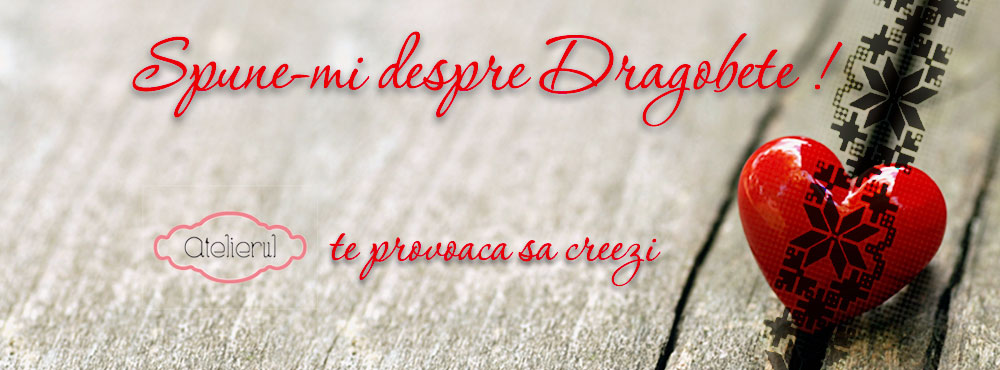
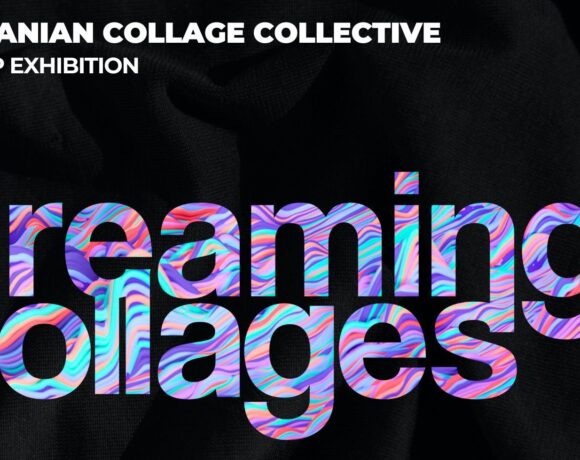
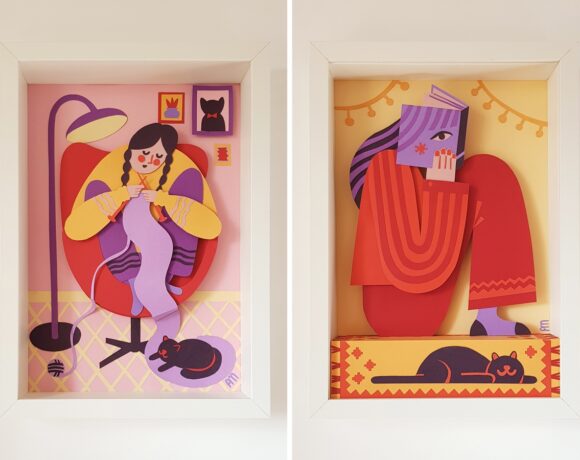
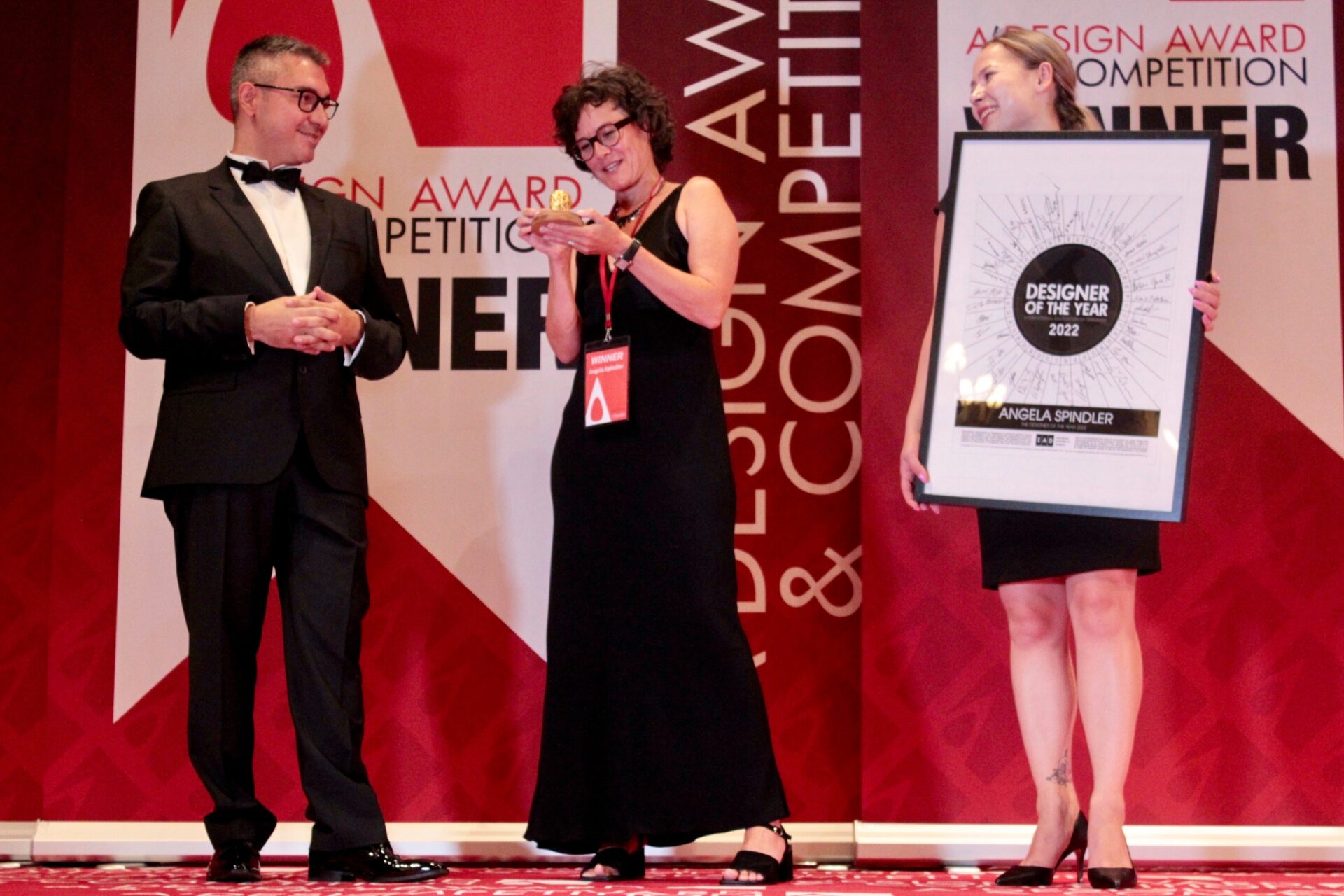
Fără comentarii